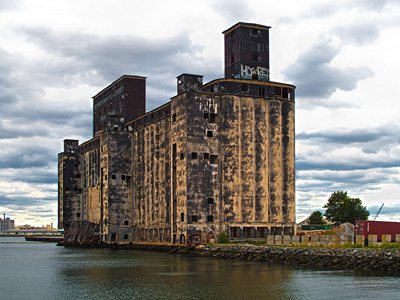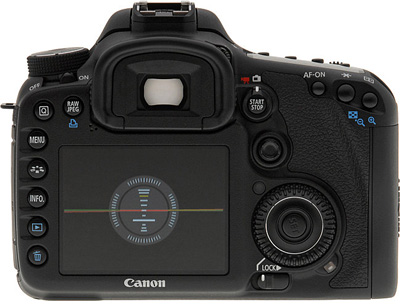After owning the beast for a couple of months, here’s my initial Canon 7D review. The Canon EOS 7D was launched last year in the wake of a fury of new cameras by Canon and other brands. It would seem that technology is evolving so fast  that manufacturers are forced to flood the market with models that get superseded in less than a year. The closer to the top, the longer they last. I’m curious to see how the 7D will do.
that manufacturers are forced to flood the market with models that get superseded in less than a year. The closer to the top, the longer they last. I’m curious to see how the 7D will do.
For reference, the 7D fits in a special niche between the 2-digit D line (Canon 50D, 40D etc) and the single-digit line of full frames (Canon 5D MkII and 1D’s). It was a first for Canon to introduce a single-digit D camera with a cropped sensor, and the 7D obviously aims at bridging the gap between both categories, in the semi-pro field.
In many ways, the Canon 7D is the best cropped sensor Canon DSLR to ever hit the market, which is logical since it is the most recent one, but still quite impressive. It features the most recent and innovative advances in digital camera design and in that way, it even tops the high-end 5D Mark II and 1Ds.
First let’s look at the specs: as per Canon, “the Canon EOS 7D features an all-new 18.0 Megapixel APS-C size CMOS sensor and Dual DIGIC 4 Image Processors, capturing tremendous images at up to ISO 12800 and speeds of up to 8 fps. The EOS 7D has a new all cross-type 19-point AF system with improved AI Servo II AF subject tracking and user-selectable AF area selection modes for sharp focus no matter the situation. The EOS 7D’s Intelligent Viewfinder, an entirely newly-designed technology, provides approximately 100% coverage and displays user-selected AF modes as well as a spot metering circle and ondemand grid lines. New iFCL Metering with 63-zone dual-layer metering system uses both focus and color information to provide accurate exposure even in difficult lighting. The EOS 7D also captures Full HD video at 30p (29.97 fps), 24p (23.976 fps) and 25p with an array of manual controls,  including manual exposure during movie shooting and ISO speed selection. The EOS 7D features a magnesium alloy body that is dust – and weather – resistant and shutter durability of up to 150,000 cycles.”
including manual exposure during movie shooting and ISO speed selection. The EOS 7D features a magnesium alloy body that is dust – and weather – resistant and shutter durability of up to 150,000 cycles.”
All right, what does this all mean? It would seem that despite Canon’s recent change of heart on the resolution race in its smaller models like the G series (the G11 having been backed down to 10 Megapixels from the 15 found on its predecessor the G10), the 7D was equipped with a huge 18 Megapixels sensor, probably to stay on par with the higher models and also to appeal to pros who are used to very high printing resolutions and would consider the 7D as a second body.
The dual processors make the 7D an incredibly fast camera, a must for sports and action photographers. 8 frames per second is a lot of frames and doesn’t make much of a difference when I shoot a sunset, but it sure will catch a bird in mid-air.
The auto-focus is a pleasure to use and combined with the new 100% coverage intelligent viewfinder, it opens new doors in terms of viewfinder information display and versatility. I particularly like the optional red illumination of focus points and grid-lines when focus is achieved.
The standard ISO range is 100-64,000, expendable to 128,000. Noise levels are impressively controlled up to high settings and coupled with the newest advances in software RAW noise suppression, I find the images produced by the 7D to be very impressive.
And then there’s full HD video. That simply has to be seen to be appreciated. I am still recording practice footage from time to time and will eventually post so samples, but my technique needs some refining, so I am taking my time. The 7D’s video capabilities are so good that it has sparked a great new trend in video making, along with the 5D MkII. Wonderful films are being recording on Canon DSLR’s and I hope to be able to compete some day.
The Canon 7D is pleasure to handle. It is rather heavy and stable, fits comfortably in my hand (especially having upgraded from a Rebel 450D) and the grip makes it steady as a rock. The finishing is superb and the body feels strong and tough. Ergonomics are beautiful and all controls easily accessible. And there are endless  customization options, down to individual button functions. The 920,000 dots VGA LCD is superb and viewable at a 170° angle.
customization options, down to individual button functions. The 920,000 dots VGA LCD is superb and viewable at a 170° angle.
On the minor leagues, one of my favorite features is the integrated electronic level, allowing to level the camera by displaying a visual indication in the viewfinder or on the LCD screen. The Live View mode has much improved since the Rebel days and is now a pleasure to use, and it provides an automatic mirror lock for my HDR shooting.
The battery status screen is superbly detailed, outlining individual levels for both batteries in the grip and allowing to register multiple batteries whose remaining charge can then be tracked even while outside of the camera!
On the downside, the Canon 7D uses CompactFlash cards instead of the SD cards I was used to, which will force me to buy new ones and they seem to cost a little more – I guess it’s a matter of market. CompactFlash cars are a bit bulkier but maybe they are sturdier.
The 7D is also the first Canon DSLR to feature an integrated wireless Speedlight flash transmitter, but since I still do not own a flash, this will have to wait…
Image quality is wonderful, but of course I still only own a single decent lens which I purchased with the camera, the Canon EF-S 10-22mm f/3.5-4.5 USM extra wide angle. It’s not an “L” lens but still produces very nice pictures. My next acquisition will probably be a Canon EF 24-105mm f/4L IS USM to get back into a more reasonable focal range, time – and budget – will tell.
Bottom line of my Canon 7D review: I adore it. I will still some day switch to a full-frame, or rather add one to my line-up. But there is time, the 5D MkII’s successor has yet to be unveiled, and the 7D remains such an affordable and yet incredibly potent upgrade on my old 450D that I have many shooting days ahead of me before I start thinking full-frame.
Everything you have seen on this blog since June (except for retrospective South African pictures) was taken with the 7D. Stay tuned. Much more to come!
Comments
Karen
Vince